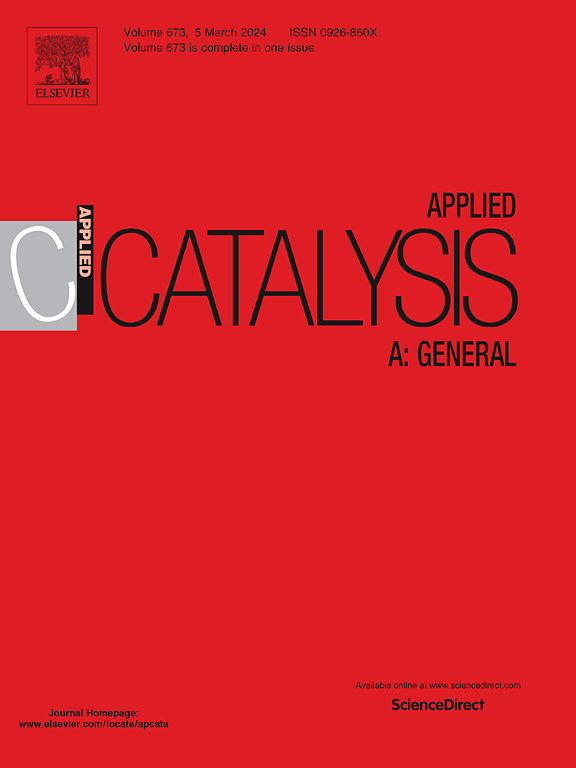Polyoxometalates modified g-C3N4 promotes efficient photocatalytic cleavage of C−C bond in lignin model compounds
IF 4.8
2区 化学
Q2 CHEMISTRY, PHYSICAL
引用次数: 0
Abstract
Lignin stands out as the largest natural reservoir of renewable aromatic compounds, positioning it as a highly potential substitute for fossil fuels. However, due to the complex structure of lignin, achieving lignin depolymerization under mild conditions is still challenging. Phosphomolybdic acid (PMo12) was introduced as an electron acceptor, and phosphomolybdic acid/carbon nitride (PMo12/g-C3N4) composite photocatalysts with varying phosphomolybdic acid loadings were synthesized by a straightforward hydrothermal process. PMo12/g-C3N4 composite photocatalysts efficiently cleave C−C bonds in the β−O−4 lignin model compounds at room temperature and pressure under simulated sunlight irradiation. The 15 % PMo12/g-C3N4 composite photocatalyst has far higher catalytic efficiency than pure g-C3N4, with optimal yields of benzaldehyde and phenyl formate of 81 % and 66 %, respectively, and the selectivity of C−C cleavage could reach 94 %. The results demonstrate that loading PMo12 greatly enhances the separation of photoinduced carriers within the 15 % PMo12/g-C3N4 composite photocatalyst, which substantially increases its photocatalytic performance. This research introduces a novel method to efficiently cleave C−C bonds in lignin, which could have important implications for its high-value utilization.
多金属氧酸酯修饰g-C3N4促进木质素模型化合物中C−C键的有效光催化裂解
木质素是最大的可再生芳香族化合物的天然储存库,是一种极具潜力的化石燃料替代品。然而,由于木质素结构复杂,在温和条件下实现木质素解聚仍然是一个挑战。以磷钼酸(PMo12)为电子受体,采用水热法合成了不同磷钼酸负载的磷钼酸/氮化碳(PMo12/g-C3N4)复合光催化剂。PMo12/g-C3N4复合光催化剂在室温和常压下模拟阳光照射下有效地裂解β−O−4木质素模型化合物中的C−C键。15 % PMo12/g-C3N4复合光催化剂的催化效率远高于纯g-C3N4,苯甲醛和甲酸苯的最佳产率分别为81 %和66 %,C−C裂解选择性可达94 %。结果表明,在15 %的PMo12/g-C3N4复合光催化剂中,PMo12的负载极大地促进了光诱导载流子的分离,从而大大提高了其光催化性能。本研究介绍了一种有效切割木质素中C−C键的新方法,这对木质素的高价值利用具有重要意义。
本文章由计算机程序翻译,如有差异,请以英文原文为准。
求助全文
约1分钟内获得全文
求助全文
来源期刊

Applied Catalysis A: General
化学-环境科学
CiteScore
9.00
自引率
5.50%
发文量
415
审稿时长
24 days
期刊介绍:
Applied Catalysis A: General publishes original papers on all aspects of catalysis of basic and practical interest to chemical scientists in both industrial and academic fields, with an emphasis onnew understanding of catalysts and catalytic reactions, new catalytic materials, new techniques, and new processes, especially those that have potential practical implications.
Papers that report results of a thorough study or optimization of systems or processes that are well understood, widely studied, or minor variations of known ones are discouraged. Authors should include statements in a separate section "Justification for Publication" of how the manuscript fits the scope of the journal in the cover letter to the editors. Submissions without such justification will be rejected without review.
 求助内容:
求助内容: 应助结果提醒方式:
应助结果提醒方式:


